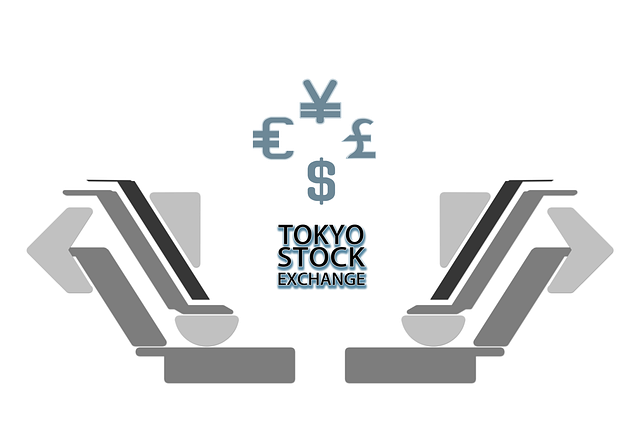
Ethereum, a pioneer in blockchain technology, employs unique deflationary mechanisms like burning transactions or tokens to reduce its native token supply (Ether) over time, mimicking real-world deflation. This strategy significantly impacts token economics, boosting prices and long-term growth prospects for ETH holders. Deflation on Ethereum creates scarcity that incentivizes long-term holding, reduces short-term trading gains, and attracts investors seeking protection against inflation. Portfolio managers must adapt to these dynamics by focusing on assets with limited supply and strong fundamentals. Ethereum's deflationary mechanics promise to stabilize token value, drive innovation through decentralized applications, and solidify its position as a leading blockchain in the digital revolution.
“Unraveling deflationary mechanics on Ethereum reveals a complex economic landscape for token holders. This article explores the intricate interplay between deflation, burning mechanisms, and their profound implications on investment strategies. We delve into how deflation affects token value, market dynamics, and portfolio management within the Ethereum ecosystem. By examining the role of burning, we provide insights into the future prospects and sustainability of this leading blockchain’s economy.”
- Understanding Deflationary Mechanics on Ethereum
- How Deflation Affects Token Holders' Economics
- The Role of Burning Mechanisms in Ethereum's Deflation
- Impact on Investment Strategies and Portfolio Management
- Future Prospects: Sustainability and Market Dynamics
Understanding Deflationary Mechanics on Ethereum

Ethereum, as a pioneering blockchain platform, has introduced innovative mechanics that go beyond traditional financial systems. Deflationary mechanisms on Ethereum refer to protocols and token models designed to reduce the supply of tokens over time, creating scarcity and potentially increasing their value. This concept is in stark contrast to inflationary currencies where the supply is constantly expanding.
One prominent example is the burning mechanism, where a percentage of transactions or token transfers are permanently removed from circulation. This process mimics the real-world concept of deflation, where the reduction in supply can lead to price appreciation. Ethereum’s native token, Ether (ETH), employs this strategy to control its overall supply, making it a unique feature that distinguishes it from many other cryptocurrencies. Understanding these mechanics is crucial for holders as it influences the long-term sustainability and potential growth of their investments within the Ethereum ecosystem.
How Deflation Affects Token Holders' Economics

Deflation, a phenomenon where the general price level of goods and services falls over time, has significant implications for Ethereum token holders. When deflationary mechanics are at play on Ethereum, such as through the burning of tokens or the implementation of scarce resources, the supply of ETH decreases while its demand remains constant or increases. This dynamic directly impacts token economics, leading to potentially higher prices and increased value for holders over time.
For Ethereum investors, deflation can act as a powerful incentive structure. As the total supply reduces, each token becomes relatively scarcer, enhancing its worth. This is especially true in the context of Ethereum’s expanding ecosystem, where the network’s increasing utility and adoption further drive up demand for its native currency. Consequently, deflationary mechanisms on Ethereum work to align incentives, encouraging long-term holding and investment in the platform’s success.
The Role of Burning Mechanisms in Ethereum's Deflation

Ethereum, like many other cryptocurrencies, employs burning mechanisms as a key component in its deflationary model. When users perform certain transactions, such as sending or swapping assets on decentralized exchanges (DEXs), a small fee is collected and burned from circulation. This process reduces the total supply of Ethereum tokens, creating scarcity and driving up their value over time. The burning mechanism acts as a natural hedge against inflation, ensuring that the network’s native currency maintains its integrity and doesn’t devalue due to excessive issuance.
These burning mechanisms have profound economic implications for Ethereum holders. As the overall supply decreases, each remaining token becomes more scarce and potentially more valuable. This dynamic incentivizes long-term holding and reduces the allure of short-term trading gains, fostering a more stable and sustainable investment environment. Furthermore, the deflationary pressure can attract investors seeking to protect their purchasing power against traditional inflationary trends, solidifying Ethereum’s position as not just a digital asset but also a store of value in the ever-evolving cryptocurrency landscape.
Impact on Investment Strategies and Portfolio Management

Deflationary mechanics on Ethereum significantly alter investment strategies and portfolio management for holders. As the network transitions from a inflationary to deflationary model, the supply of Ether (ETH) decreases over time, potentially increasing its value. This dynamic encourages long-term holding strategies, as investors may benefit from capital gains as scarcity sets in.
Portfolio managers on Ethereum need to adapt their approaches, focusing more on assets with limited supply and strong underlying fundamentals. Deflationary dynamics can also influence risk assessment, as the potential for price appreciation may outweigh volatility. Investors should closely monitor deflationary initiatives within the Ethereum ecosystem, such as burning mechanisms or token gating, which could drive value and create new opportunities for growth.
Future Prospects: Sustainability and Market Dynamics

Looking ahead, Ethereum’s deflationary mechanics have the potential to shape its future economic landscape significantly. As the network continues to evolve, the balance between supply and demand will play a crucial role in maintaining a sustainable ecosystem. A key prospect is the long-term stability of token value, which could attract both developers and investors seeking robust digital assets. The market dynamics may shift towards a more balanced state, where price fluctuations are less volatile, providing a favorable environment for holders to secure their investments.
Additionally, Ethereum’s ability to facilitate decentralized applications and smart contracts can drive innovation across various industries. With its expanding ecosystem, the network might become the go-to platform for businesses seeking efficient and secure transactions, further solidifying its position as a leading blockchain. This could lead to increased adoption, not only for cryptocurrency enthusiasts but also for traditional businesses looking to embrace the benefits of blockchain technology, ensuring Ethereum remains at the forefront of the digital revolution.
Ethereum’s deflationary mechanics have profound economic implications for token holders. By understanding how burning mechanisms reduce the supply of ETH, we can anticipate their impact on investment strategies and portfolio management. As Ethereum continues to evolve, its sustainable future prospects depend on balancing these deflationary pressures with robust market dynamics. For investors navigating this landscape, staying informed about these changes is crucial to making informed decisions in the ever-shifting world of ethereum.






